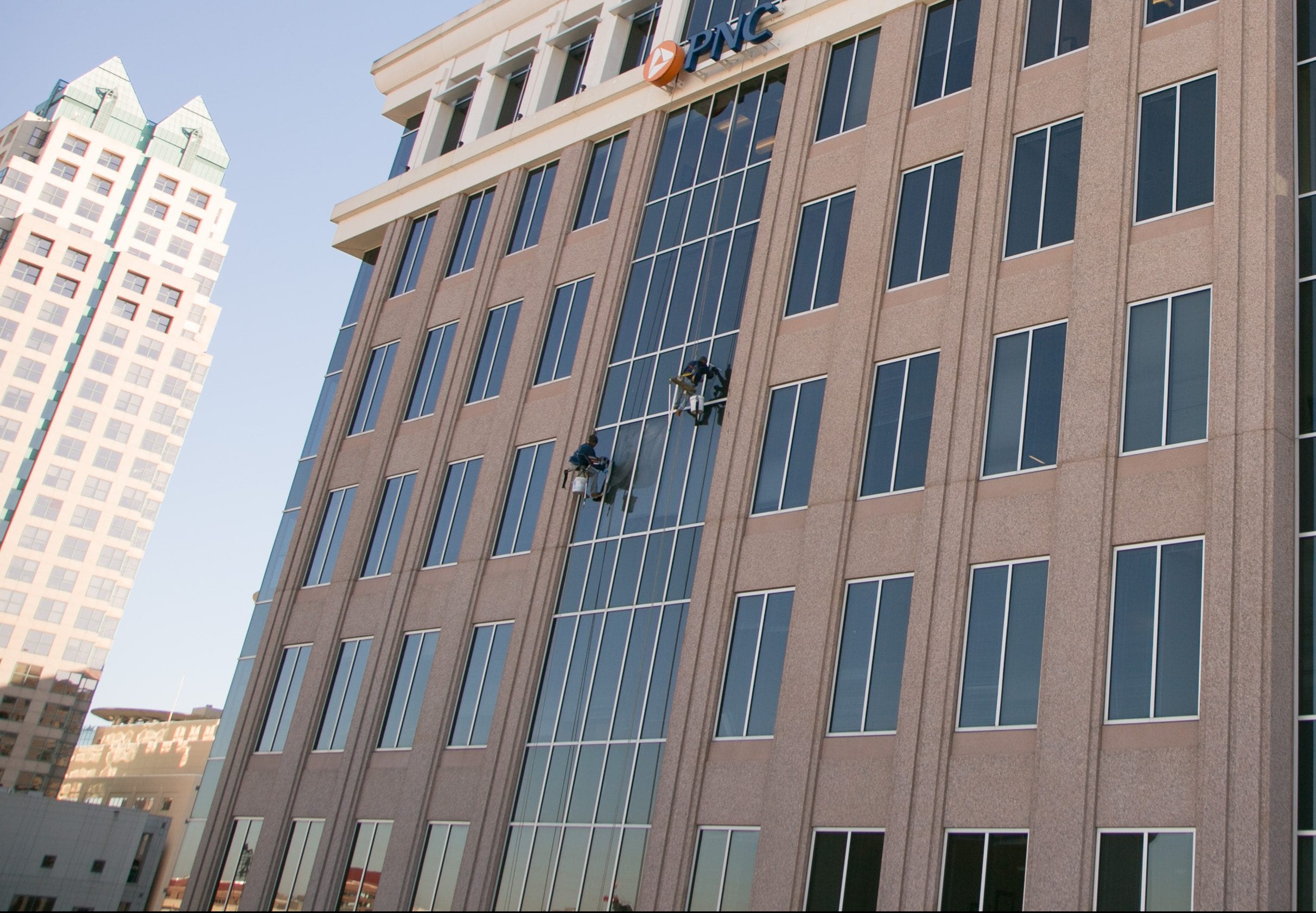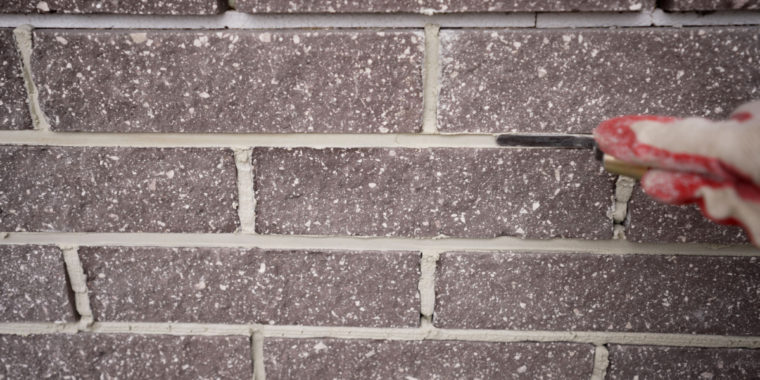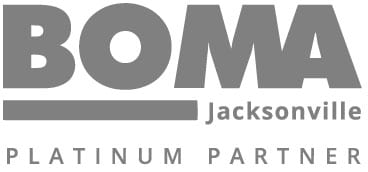Reactionary measures have their place. They’re your go-to in emergencies and the unavoidable hiccups of running a building. But wouldn’t it be better to minimize those emergencies in the first place? That’s where preventative maintenance shines, particularly for a building’s exterior. It’s more than just a defensive tactic; it’s an essential strategy for consistently maintaining the aesthetics and structural integrity of your building’s exterior.
The implications of neglecting preventative maintenance can be both financially and operationally burdensome. This article will explore the essential elements of an effective exterior preventative maintenance program, underlining its numerous benefits and emphasizing the value of engaging with industry specialists.
Three Strategies to Mitigate Wear and Tear with a Commercial Preventative Maintenance Strategy
So, you’re committed to staying ahead of the game with preventative maintenance. Fantastic! What are the best strategies to pull this off? We’re talking about actionable steps that can make a tangible difference in managing your property. In the next section, we’ll dig into three key strategies to set you up for long-term success.
Regular Inspections and Early Detection
You wouldn’t drive your car 100,000 miles without a check-up, right? The same principle applies to your building. Conducting regular inspections isn’t just good sense; it’s non-negotiable for your property’s health. This involves monitoring the interior and exterior, from structural components to fall protection systems and everything in between.
Train your staff or bring in pros to look for things you might not even know could be a problem. Put it on the calendar, develop a commercial building preventative maintenance checklist, and make it a ritual. With early detection, you can knock out minor issues like leaks or cracks before they become money-sucking disasters.
Implement a Preventative Maintenance Program
Each component, no matter how small, has a purpose and contributes to your investment’s overall success and longevity. Prioritize tasks based on what keeps your property running smoothly and what items could spell catastrophe if neglected.
Don’t just patch up that wall—make sure you’re preemptively stopping leaks before they can do any real damage. This is a great time to find out why a leak occurred. Like a detective, get down to the details of why the damage occurred so you can take measures to prevent it from happening again. Most importantly, make sure you document everything. A rock-solid maintenance history isn’t just for peace of mind; it’s a financial safeguard for future budgeting and planning.
As a building professional, managing the myriad of maintenance challenges, such as washing windows hundreds of feet off the ground or addressing complex façade issues, requires a level of expertise and equipment that specialized service providers like A1 offer.
Collaboration with professionals ensures that all activities adhere to the highest safety standards and comply with OSHA regulations, significantly reducing the risk of liability.
Here are key advantages professionals provide, forming the cornerstone of a thriving, long-lasting property:
- Safety and Compliance: Experts strictly adhere to OSHA regulations and standards, significantly reducing liability risks and ensuring a safe working environment.
- Consultative Approach: Regular interactions and check-ins with professionals offer services and invaluable insights and recommendations, fostering a proactive approach to building maintenance.
- Reliability and Efficiency: A skilled maintenance partner acts as a one-stop solution, offering comprehensive, customized solutions emphasizing efficiency, cost-effectiveness, and, most importantly, reliability.
- Building Lasting Relationships: Beyond transactional interactions, the ideal partnership is about cultivating lasting relationships that enhance the value and longevity of your property. The right partner offers solutions tailored to your property’s unique challenges, ensuring safety, efficiency, cost-effectiveness, and, most importantly, reliability.
The right partnership in commercial preventative maintenance is integral to managing your property’s health, meeting timelines, and exceeding expectations. This collaborative approach goes beyond exterior maintenance; it’s about creating a sustainable, safe, and compliant environment for your property, ensuring its long-term success.
Commercial Building Preventative Maintenance Checklist
Keeping your commercial building in top shape requires regular and thorough preventative maintenance. Our checklist covers the most prominent aspects of your building’s upkeep so you can ensure it stays in peak condition.
Building Envelope
- Inspect for cracks, gaps, or damage in the exterior walls, siding, or façade: Regularly check these areas to prevent water ingress and structural damage.
- Check for loose or missing cladding, bricks, or stucco: This helps maintain the building’s structural integrity and aesthetic appeal.
- Examine windows and doors for gaps or seals that need replacing: Proper sealing ensures energy efficiency and prevents moisture issues.
- Inspect for cloudy glass/window staining, even after cleaning: Clear windows are essential aesthetics and energy efficiency.
- Check the condition of gutters, downspouts, and drains: Ensuring these are clear and functional prevents water damage.
- Examine any exposed metal surfaces for rust or corrosion: This helps maintain the durability of metal components.
- Inspect facades for mold, mildew, or discoloration from dirt or pollution: Regular cleaning maintains the building’s appearance and structural integrity.
- Exterior damage due to birds & bird droppings: Addressing this prevents damage and maintains cleanliness.
Grounds and Walkways
Well-maintained and safe grounds and walkways enhance the property’s curb appeal. This section focuses on the upkeep of outdoor spaces, ensuring they are safe, functional, and visually appealing.
- Check for loose pavers or uneven walkway surfaces: This is important for safety and accessibility.
- Check irrigation systems for leaks & ensure they are pointed away from glass: Proper irrigation maintains landscaping without damaging the building.
- Ensure signage is clean and easy to read: Clear signage is essential for navigation and branding.
Safety Systems
This section emphasizes the importance of regular inspections and maintenance of safety equipment to ensure compliance with regulations and the protection of occupants.
- Schedule annual rooftop anchor & safety system inspections: OSHA mandates annual inspections of anchorages conducted by a qualified person to ensure system safety and functionality.
- Schedule certifications of rooftop anchors every five to ten years.
- Check that emergency response systems are in working order: Ensuring emergency readiness is crucial to the occupant’s safety.
- Ensure compliance with OSHA, ANSI, and local safety regulations: This helps maintain a legally compliant and safe environment.
Miscellaneous
The miscellaneous portion of the checklist includes reviewing and updating the maintenance plan for your building’s unique needs.
- Review your preventative maintenance plan and make necessary updates: Keeping the plan current ensures that it addresses all potential issues.
- Document maintenance activities, inspections, repairs, and warranties: This helps track the building’s maintenance history.
- Create a schedule for regular maintenance tasks: A well-planned schedule ensures all aspects of maintenance are covered timely.
- Train staff on safety procedures and maintenance protocols: Well-trained staff are essential for effective maintenance and safety.
Adhering to this comprehensive preventative maintenance checklist ensures your commercial building remains visually appealing, structurally sound, and safe for all occupants. It’s an investment in your property’s longevity and operational excellence.
Ensuring the Future of Your Commercial Property with A1
The upkeep of your commercial property is not just about responding to problems as they arise—it’s about preventing them. The strategies highlighted throughout this article provide a roadmap for maintaining your building’s exterior, with regular inspections, a robust preventative maintenance program, and the expertise of seasoned professionals.
A reliable maintenance partner will keep you informed about your building’s health and the preventive measures they take and consistently meet timelines and exceed expectations. In essence, the ideal partnership goes beyond transactions; it’s about building a lasting relationship that elevates the longevity and value of your property.
A1 stands at the forefront of commercial building maintenance, offering specialized services to keep your property in prime condition. Our expertise ranges from waterproofing, window cleaning, fall protection systems, rooftop anchors, and more. Contact A1 today to request a quote and learn more about how our services can enhance your building’s performance and aesthetic appeal, ensuring peace of mind and long-term success.










